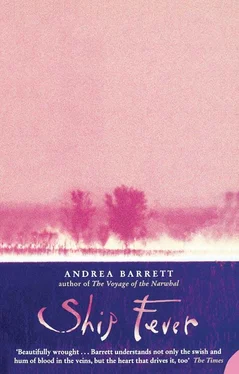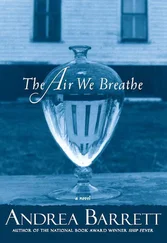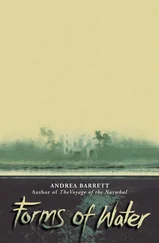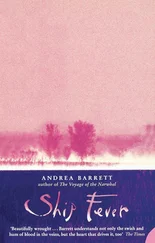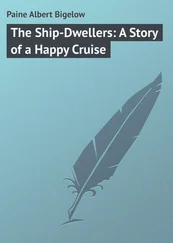No one objects to the introduction of aquatic anthropoids into the conversation. Reports of them surface every few years — Cingalese fishermen swear they’ve caught them in their nets, a ship’s captain spots two off the coast of Massachusetts. In Paris, only four years ago, a living female of the species was exhibited.
Collinson says, “Our friend Mr. Achard writes me that he has seen them hibernating in the cliffs along the Rhine. But I have my doubts about the whole story.”
“Yes?” Pennant says. “So what do you believe?”
“I think swallows migrate,” Collinson says.
While the servants change plates, replace glasses, and open fresh bottles of wine, Collinson relates a story from Mr. Adanson’s recent History of Senegal. Off the coast of that land in autumn, he says, Adanson reported seeing swallows settling on the decks and rigging of passing ships like bees. Others have reported spring and autumn sightings of swallows in Andalusia and over the Strait of Gibraltar. “Clearly,” Collinson says, “they must be birds of passage.”
Which is what Sarah Anne believes. She opens her mouth and proposes a simple experiment to the men. “The swallow must breathe during winter,” she says, between the soup and the roasted veal. “Respiration and circulation must somehow continue, in some degree. And how is that possible if the birds are under water for so long? Could one not settle this by catching some swallows at the time of their autumn disappearance and confining them under water in a tub for a time? If they are taken out alive, then Linnaeus’s theory is proved. But if not…”
“A reasonable test,” Collinson says. “How would you catch the birds?”
“At night,” she tells him impatiently. Oh, he is so old; he has dribbled more gravy on his waistcoat. How is that he can no longer imagine leaving his world of books and talk for the world outside? Anyone might gather a handful of birds. “With nets, while they roost in the reeds.”
Collinson says, “If they survived, we might dissect one and look for whatever internal structure made possible their underwater sojourn.”
He seems to be waiting for Sarah Anne’s response, but Christopher is glaring at her. She knows what he’s thinking: in his new, middle-aged stodginess, assumed unnecessarily early and worn like a borrowed coat, he judges her harshly. She’s been forward in entering the conversation, unladylike in offering an opinion that contradicts some of her guests, indelicate in suggesting that she might pursue a flock of birds with a net.
What has gotten into him? That pulse she hears inside her ear, the steady swish and hum of her blood, is the sound of time passing. Each minute whirling past her before she can wring any life from it; hours shattered and lost while she defers to her brother’s sense of propriety.
Upstairs, finally. Dismissed while the men, in the library below, drink Christopher’s excellent wine and avail themselves of the chamberpot in the sideboard. Her brother’s friends are grateful for her hospitality, appreciative of her well-run household; but most grateful and appreciative when she disappears.
Her room is dark, the night is cool, the breeze flows through her windows. She sits in her high-ceilinged room, at the fragile desk in the three-windowed bay facing west, over the garden. If it were not dark, she could see the acres leading down to the lake and the low stretch of rushes and willows along the banks.
Her desk is very small, meant to hold a few letters and a vase of flowers: useless for any real work. The books she’s taken from the library spill from it to the floor. Gorgeous books, expensive books. Her brother’s books. But her brother doesn’t use them the way she does. She’s been rooting around in them and composing a letter to Linnaeus, in Uppsala, about the evening’s dinner conversation. Christopher need never know what she writes alone in this room.
Some years ago, after Peter Kalm’s visit, Sarah Anne’s father and Linnaeus corresponded for a while; after expressing admiration for the great doctor’s achievements this visit is what she first mentions. Some flattery, some common ground. She discusses the weather, which has been unusual; she passes on the news of Collinson’s latest botanical acquisitions. Only then does she introduce the subject of the swallows. She writes:
Toward the end of September, I have observed swallows gathering in the reeds along the Thames. And yet, although these reeds are cut down annually, no one has ever discovered swallows sleeping in their roots, nor has any fisherman ever found, in the winter months, swallows sleeping in the water. If all the great flocks seen in the autumn dove beneath the water, how could they not be seen? How could none be found in winter? But perhaps the situation differs in Sweden.
You are so well-known and so revered. Could you not offer the fishermen of your country a reward, if they were to bring to you or your students any swallows they found beneath the ice? Could you not ask them to watch the lakes and streams in spring, and report to you any sightings of swallows emerging from the water? In this fashion you might elucidate the problem.
She pauses and stares at the candle, considering what she observed last fall. After the first killing frosts, the swallows disappeared along with the warblers and flycatchers and other insectivorous birds deprived of food and shelter. Surely it makes sense that they should have gone elsewhere, following their food supply?
She signs the letter “S.A. Billopp,” meaning by this not to deceive the famous scholar but simply to keep him from dismissing her offhand. Then she reads it over, seals it, and snuffs her candle. It is not yet ten but soon the men, who’ve been drinking for hours, will be expecting her to rejoin them for supper. She will not go down, she will send a message that she is indisposed.
She rests her elbows on the windowsill and leans out into the night, dreaming of Andalusia and Senegal and imagining that twice a year she might travel like the swallows. Málaga, Tangier, Marrakech, Dakar. Birds of passage fly from England to the south of France and from there down the Iberian peninsula, where the updrafts from the Rock of Gibraltar ease them over the Strait to Morocco. Then they make the long flight down the coast of Africa.
A bat flies by, on its way to the river. She has seen bats drink on the wing, as swallows do, sipping from the water’s surface. Swallows eat in flight as well, snapping insects from the air. Rain is sure to follow when they fly low; a belief that dates from Virgil, but which she knows to be true. When the air is damp and heavy the insects hover low, and she has seen how the swallows merely follow them.
In the dark she sheds her gown, her corset, her slippers and stockings and complicated underclothes, until she is finally naked. She lies on the floor beside her desk, below the open window. Into her notebook she has copied these lines, written by Olaus Magnus, archbishop of Uppsala, in 1555:
From the northern waters, swallows are often dragged up by fishermen in the form of clustered masses, mouth to mouth, wing to wing, and foot to foot, these having at the beginning of autumn collected amongst the reeds previous to submersion. When young and inexperienced fishermen find such clusters of swallows, they will, by thawing the birds at the fire, bring them indeed to the use of their wings, which will continue but a very short time, as it is a premature and forced revival; but the old, being wiser, throw them away.
A lovely story, but surely wrong. The cool damp air washes over her like water. She folds her arms around her torso and imagines lying at the bottom of the lake, wings wrapped around her body like a kind of chrysalis. It is cold, it is dark, she is barely breathing. How would she breathe? Around her are thousands of bodies. The days lengthen, some signal arrives, she shoots with the rest of her flock to the surface, lifts her head and breathes. Her wings unfold and she soars through the air, miraculously dry and alive.
Читать дальше
Конец ознакомительного отрывка
Купить книгу
